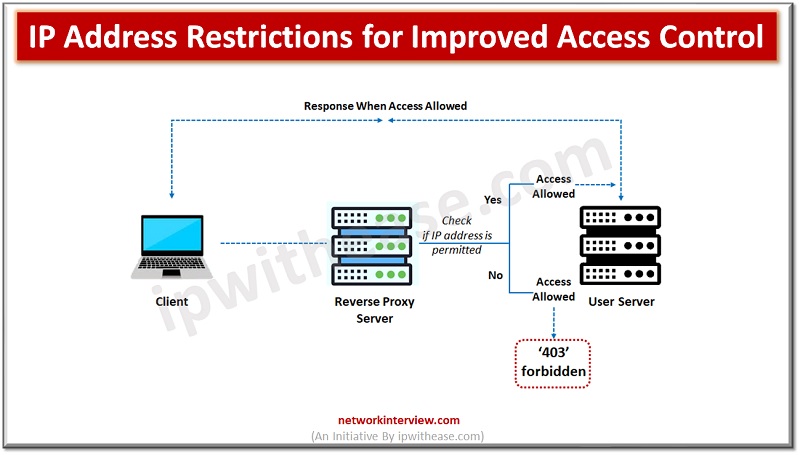
IP Address Restrictions for Improved Access Control
Network security is of paramount importance for IT administrators. Various ways and means and a variety of tools are used to protect organization networks from internal and external attacks. All communications in a network happens via IP addresses as per ISO communication framework. IP restrictions is one such approach which helps in effective management of access control in networks.
Today we look more in detail about how IP address restrictions one, how they are implemented and how they help in improving the access control within organizations IT networks.
What is IP Address Restriction?
Multiple cloud-based applications, no physical restrictions on workers working, increased remote working culture leading to employees’ access to data is originating from multiple systems with multiple IP addresses thus there is fear of data leakage making data thefts quite common which threatens the overall security posture of enterprises.
IT administrators widely use IP restrictions to limit access to business data only to specific and registered address ranges. Once an IP address restriction is imposed admins can mention which IP addresses will have access to login into user’s accounts in a restricted manner. If any illegitimate user tries to log into the system, it will throw and error or block the user.
IP address restriction is also known as IP whitelisting. It lets you specify which IP addresses are allowed to access specific resources. This can be achieved both for inbound and outbound traffic. This feature provides an extra layer of protection to business by ensuring only authorized users have access to business sensitive data and systems.
Benefits of IP address restrictions
- Improved security – restricting access to specific IP address, enhance the security of data and resources which is critical for business and sensitive in nature
- Reduction in costs – IP address restrictions helps to conserve costs with reduction in efforts required to manage access
- Improved performance – IP address restrictions help to reduce network traffic which is allowed to access thereby improve the performance of network
Setup IP address Restrictions
IP address restrictions can be set up in various ways using different applications and tools meant to manage a network and its services. Let’s look at them more in detail.
Web Application Firewall – Web application firewall (WAF) is a system of filtration , which monitors and blocks incoming traffic based on a set of rules imposed. This tool can be a hardware appliance or a software application. Web application firewalls (WAF) used for protection against common cyber attacks such as SQL injection, cross site scripting (XSS) etc. in cloud-based environments.
Router – Router can be configured to implement IP address restrictions. This setting is done by logging into the router management interface and adding the IP address which you want to allow access to.
.htaccess file – In Apache server, we can set IP address restrictions using an .htaccess file. This file contains a list of IP addresses allowed to access website.
- Order deny, allow
- Allow from IP_Address
Replace IP_Address with IP address which is to be allowed list. Multiple IP addresses can be added in file with a comma separator
How does IP address restriction work?
When a user tries to login to a system or resource, their account, IP address of the login request is validated against the allowed list of IP addresses. If the IP address is not in the allowed list the portal will deny the request. Administrators can set the following actions based on IP address range of requesting IP address.
- Allow – Allows access to portal, data or resource if requested IP belongs to specific IP address range
- Challenge – Prompt user a 2FA
- Deny – Deny access to portal, data or resource if requested IP is not in specified IP address range
Continue Reading:
Firewall vs Proxy: Detailed Comparison
Residential IP vs Data Center Proxies: Complete Guide
Tag:Security



